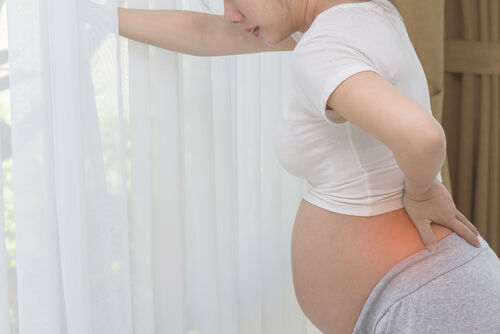Giving Birth Without An Epidural: What You Should Know

When a woman goes into labor, she can decide how she wants to manage the pain. The most common form of pain relief for birth is epidural anesthesia. However, it is also possible to give birth without an epidural.
An epidural is a technique for administrating anesthesia to control the pain of contractions during birth. With an epidural, the new mom will still feel the contractions of her uterus, but they will be much less painful.
The epidural only controls the pain associated with contractions. It is not a general anaesthetic, so the woman remains awake and alert.
Managing pain during labor allows the mother to concentrate better. This means that she can use the right breathing techniques, and focus on pushing when the time comes.
By reducing pain, an epidural can also help the mother to recover more quickly from giving birth.
However, in certain cases, epidural anesthesia is not an option. This happens primarily due to medical reasons. Birth without an epidural becomes necessity if the life of the mom or the baby is at risk.
Reasons for giving birth without an epidural
- Pain relief is not just the mother’s decision. In some cases, women may not be able to receive a dose of anesthetics.
- An epidural is not recommended if the mother has a blood clotting disorder, or is taking anticoagulants.
- Some people are allergic to the drugs used for anesthesia. If this is the case, an epidural may cause an allergic reaction in the mother or the baby.
- In some cases, an epidural may have the same effect as general anesthesia. That is, it puts the mother to sleep completely. In this case, the mother is not able to participate in labor, which puts the baby at risk.

- The epidural is inserted at the bottom of the spinal column. To put the catheter in, the woman needs to sit up and arch her back. However, if the woman has a deformation of the spine, it may not be possible to insert the catheter. Spinal deformations can also make epidural anesthesia more dangerous.
- Another reason why a woman may need to give birth without an epidural is if labor has progressed rapidly. This type of pain relief should ideally be given at less than 4 centimeters of dilation.
- If the mother has already gone into labor, the contractions themselves may make it difficult to put in an epidural, or anesthesia may not be necessary. The maximum dilation for application of an epidural is 8cm.
Risks associated with an epidural
In general, the risks associated with epidural anesthesia are very low, and are mostly related to problems inserting the catheter.
The epidural supplies pain relief through a catheter inserted in the lower spine. The catheter goes into the dura mater, a membrane that covers the bone marrow.
If the mom-to-be moves suddenly during the application of the epidural, she can damage her spinal cord. There are cases where the catheter moves and recovery is slow or partial. This can cause numbness in one or both legs.
The risks for the baby are even lower. In general, an epidural increases the mother’s body temperature. If labor goes on a long time, this can also occur in the baby.
Other side effects may include:
- Shivering
- Headache
- Nausea
Techniques for birth without an epidural
If the mother or the medical team have opted for birth without an epidural, there are other pain management techniques that may be useful. The most important thing is to remain calm and avoid stress.
Nerves are the top cause of suffering for the mother. Anxiety can make her lose control over her body, just when she needs to concentrate and follow instructions.

Breathing techniques
Breathing patterns are extremely important for labor, helping the mom-to-be to keep her energy levels up. As the contractions progress, breathing techniques may vary. Long, deep breaths are needed at the start of labor, while short breaths can be used to help with pushing.
Water births and massage
Water births are common among women who decide to give birth without an epidural, or are not able to have this kind of pain relief.
A bath in warm water relaxes the muscles and helps ease fears and soothe anxiety. This technique can help the final stages of labor to progress more quickly and easily.
A massage of the lower back can also aid relaxation of the pelvis and reduce the discomfort caused by the pressure of the baby. Hot compresses can also be used in this area.
When a woman goes into labor, she can decide how she wants to manage the pain. The most common form of pain relief for birth is epidural anesthesia. However, it is also possible to give birth without an epidural.
An epidural is a technique for administrating anesthesia to control the pain of contractions during birth. With an epidural, the new mom will still feel the contractions of her uterus, but they will be much less painful.
The epidural only controls the pain associated with contractions. It is not a general anaesthetic, so the woman remains awake and alert.
Managing pain during labor allows the mother to concentrate better. This means that she can use the right breathing techniques, and focus on pushing when the time comes.
By reducing pain, an epidural can also help the mother to recover more quickly from giving birth.
However, in certain cases, epidural anesthesia is not an option. This happens primarily due to medical reasons. Birth without an epidural becomes necessity if the life of the mom or the baby is at risk.
Reasons for giving birth without an epidural
- Pain relief is not just the mother’s decision. In some cases, women may not be able to receive a dose of anesthetics.
- An epidural is not recommended if the mother has a blood clotting disorder, or is taking anticoagulants.
- Some people are allergic to the drugs used for anesthesia. If this is the case, an epidural may cause an allergic reaction in the mother or the baby.
- In some cases, an epidural may have the same effect as general anesthesia. That is, it puts the mother to sleep completely. In this case, the mother is not able to participate in labor, which puts the baby at risk.

- The epidural is inserted at the bottom of the spinal column. To put the catheter in, the woman needs to sit up and arch her back. However, if the woman has a deformation of the spine, it may not be possible to insert the catheter. Spinal deformations can also make epidural anesthesia more dangerous.
- Another reason why a woman may need to give birth without an epidural is if labor has progressed rapidly. This type of pain relief should ideally be given at less than 4 centimeters of dilation.
- If the mother has already gone into labor, the contractions themselves may make it difficult to put in an epidural, or anesthesia may not be necessary. The maximum dilation for application of an epidural is 8cm.
Risks associated with an epidural
In general, the risks associated with epidural anesthesia are very low, and are mostly related to problems inserting the catheter.
The epidural supplies pain relief through a catheter inserted in the lower spine. The catheter goes into the dura mater, a membrane that covers the bone marrow.
If the mom-to-be moves suddenly during the application of the epidural, she can damage her spinal cord. There are cases where the catheter moves and recovery is slow or partial. This can cause numbness in one or both legs.
The risks for the baby are even lower. In general, an epidural increases the mother’s body temperature. If labor goes on a long time, this can also occur in the baby.
Other side effects may include:
- Shivering
- Headache
- Nausea
Techniques for birth without an epidural
If the mother or the medical team have opted for birth without an epidural, there are other pain management techniques that may be useful. The most important thing is to remain calm and avoid stress.
Nerves are the top cause of suffering for the mother. Anxiety can make her lose control over her body, just when she needs to concentrate and follow instructions.

Breathing techniques
Breathing patterns are extremely important for labor, helping the mom-to-be to keep her energy levels up. As the contractions progress, breathing techniques may vary. Long, deep breaths are needed at the start of labor, while short breaths can be used to help with pushing.
Water births and massage
Water births are common among women who decide to give birth without an epidural, or are not able to have this kind of pain relief.
A bath in warm water relaxes the muscles and helps ease fears and soothe anxiety. This technique can help the final stages of labor to progress more quickly and easily.
A massage of the lower back can also aid relaxation of the pelvis and reduce the discomfort caused by the pressure of the baby. Hot compresses can also be used in this area.
All cited sources were thoroughly reviewed by our team to ensure their quality, reliability, currency, and validity. The bibliography of this article was considered reliable and of academic or scientific accuracy.
- Analgesia epidural en el parto y otras medidas de apoyo. Hospital Universitario de Ceuta. Dirección Territorial de Ceuta. Instituto Nacional de Gestión Sanitaria. [En línea].
- Hawkins, J. Epidural Analgesia for Labor and Delivery. The New England Journal o f Medicine, Vol. 326, pp 16. April 22, 2010.
- Eltzschig, H., et. al., Regional Anesthesia and Analgesia for Labor and Delivery. The New England Journal o f Medicine, Vol. 348, pp 4. January 23, 2010.
- Cunningham FG, et.al. Obstetricia de Williams. Ed. McGraw-Hill, 22ª ed. 2006.
This text is provided for informational purposes only and does not replace consultation with a professional. If in doubt, consult your specialist.








